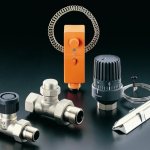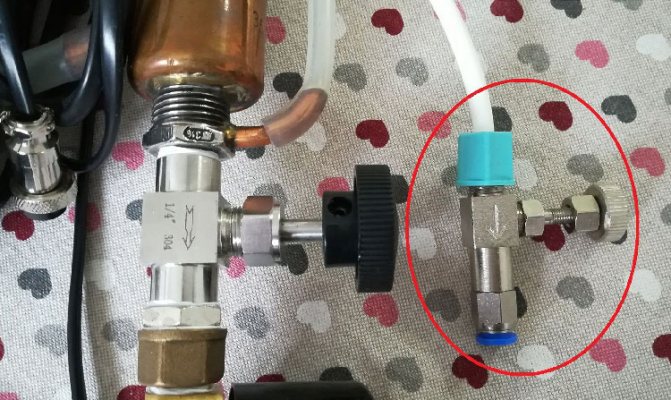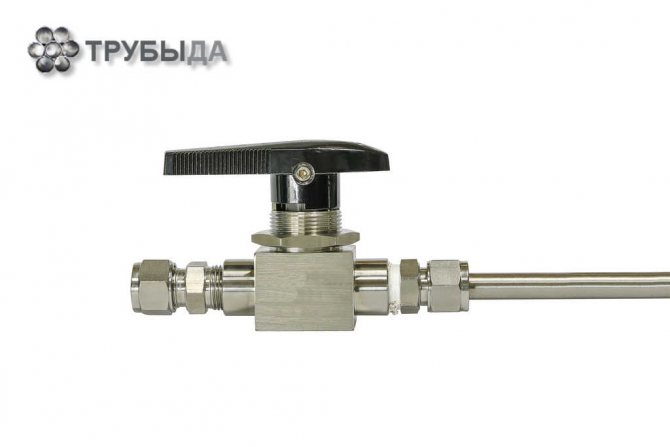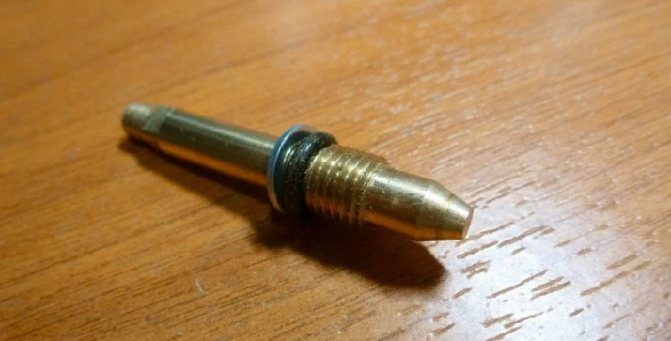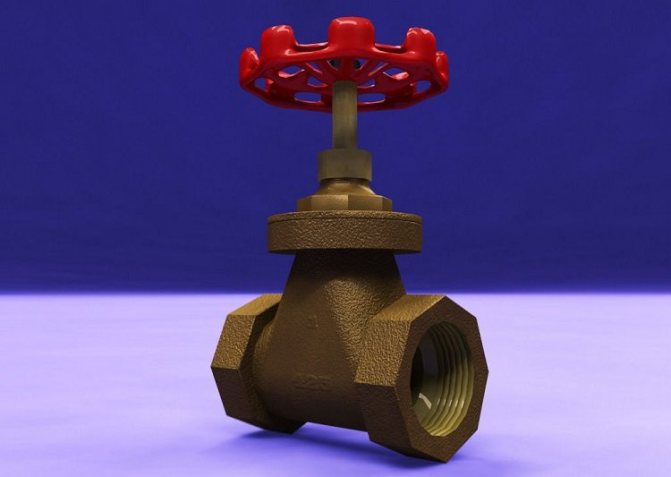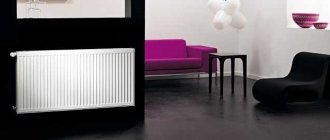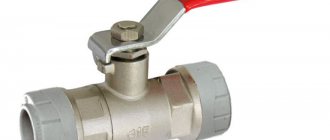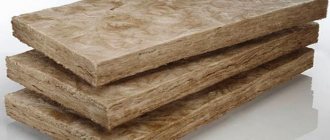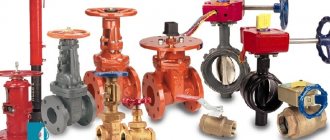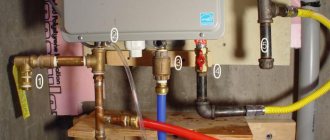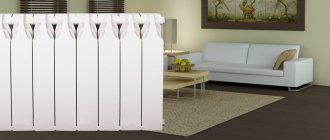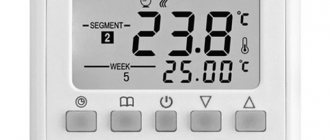Any heating system, in principle, can work without additional taps and valves. But at the first breakdown, the owner runs the risk of being left without heating. Shut-off valves will be needed, first of all, in the event of various emergencies, namely leaks, clogging of pipes, the occurrence of air jams and scheduled repairs of the heating system.
The presence of shut-off valves, or, as it is also called, radiator piping, will significantly extend the life of the heating system and greatly facilitate the life of the owner of the house.
Tasks
Taps and valves are called shut-off and control valves. To choose the right set of valves, you need to take into account what tasks certain devices perform.

During operation of the radiator, an air lock collects in the upper part of the heating system due to convection. It interferes with the normal flow of the coolant: the upper part of the pipes remains cold, the lower one heats up to unthinkable temperatures. Especially for the release of unnecessary air in the system, there should be Mayevsky taps.
In the event of a sudden leak or a clogged radiator, it is strongly recommended to remove the damaged sector without draining the entire system. In order to remove the problem section of the system, shut-off equipment is installed on the inlet and outlet pipes. The valves function in two working positions: open and closed. The valve in the open position does not interfere with the flow of water in the system, and in the closed position the flow is completely blocked. Simple ball valves are most suitable for this task.
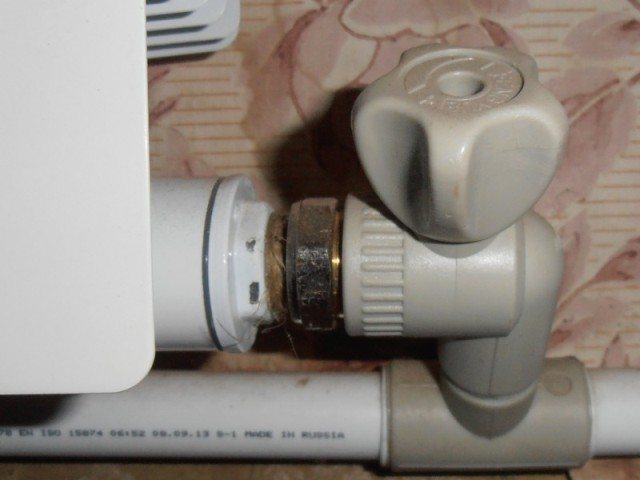

If it gets very hot in the rooms, you have to ventilate the room unscheduled in order to bring the air temperature into an acceptable range. But in this case, the heat goes out into the street. To save fuel for the boiler and not waste money on the wind, they use control valves - a thermostat or a manual thermostatic valve.
General restrictions when using control valves
It is recommended to use control valves only strictly in accordance with the intended purpose. There are a number of restrictions on use:
- if the pipeline system is intended for transporting drinking water, then brass fittings will not work, since when using it, substances harmful to the human body are formed;
- if the control valves are intended for a water supply system, then it is not recommended to use them for a different working environment;
A careful study of the technical characteristics of the product guarantees you a long-term and high-quality service of the fittings, since each of these products contains special seals, and they, in turn, are designed for a certain temperature.
Elevator unit
The standard diagram of any heating circuit is pipes with a direct flow of hot water (supply) and a return flow of cooled water (return). Such a system will work only within the permitted temperature range. If the water in the system is heated above 95 ° C, then such water cannot be supplied to the radiator.
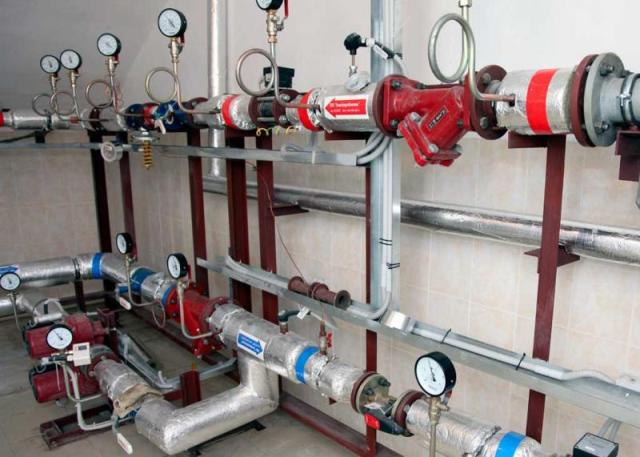

In order to cool the coolant in the heating system to permissible values, an elevator unit is used. It is a container in which water from the supply and water from the return is mixed, a nozzle, a diffuser and a piping, which includes temperature and pressure meters. The most efficient operation of the elevator unit is observed when:
- accurate calculation of each of its parameters;
- there must be a differential pressure of up to 25 bar between supply and return.
Unfortunately, the elevator unit cannot guarantee that the water in the supply line will be at any specific temperature. It all depends on how correctly the nozzle cross-section is selected. Recently, manufacturers have been offering elevator boilers, in which the nozzle solution can be changed in one direction or another. Thus, the process of mixing water in the elevator unit is regulated and the temperature of the water in the supply line is optimized.
Shut-off valves and shut-off valves
Shut-off and shut-off valves perform several important functions:
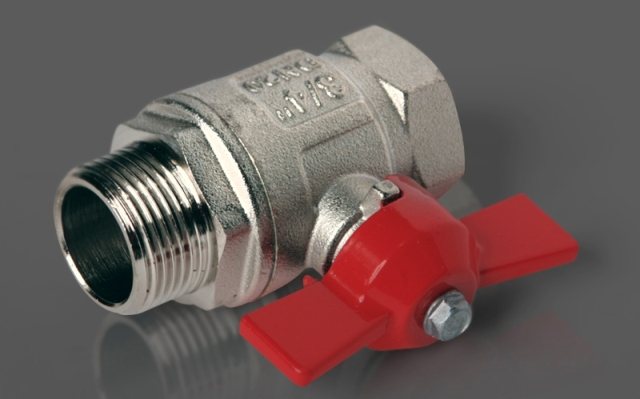

- helps to cut off the damaged or clogged section of the heating main without prejudice to the further operation of the system;
- stop valves help regulate the flow of water in the heating main and relieve air locks.
The process of regulating the movement of water in the heating main is carried out using various shut-off valves. Basically, such elements include latches, valves, taps and shutters for a radiator.
Gate valve
Gate valve is a type of shut-off valves that can be used to stop the movement of the coolant in the system. The gate valve design provides for an element located perpendicular to the direction of flow of the coolant. With the help of the regulating mechanism, it is possible to increase or decrease the clearance in the valve, thereby affecting the speed of movement of water in the system. Flanged and coupling ball valves
This type of shut-off valves got its name due to the shape of the valve. Most often, this part is in the shape of a ball, in which there is a through hole. As a locking mechanism, taps with a straight hole are cut into the heating system. By turning the lever, we change the position of the ball, thereby opening or closing the path for the coolant flow.
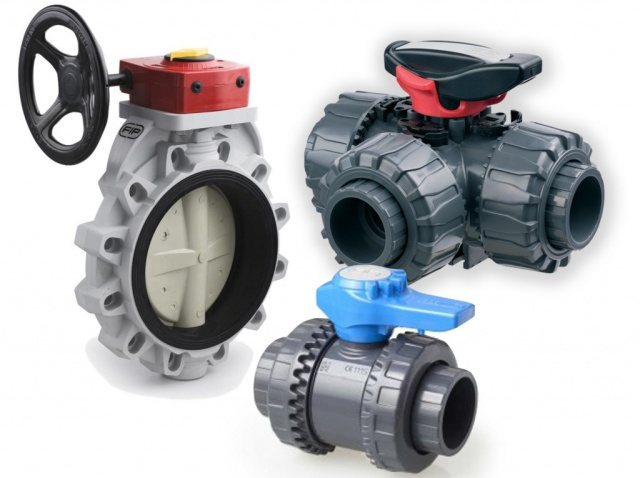

Ball valves are divided into full bore and standard. Standard valves allow up to 80% of the water flow in the system to pass without blocking. A full bore ball valve has almost one hundred percent throughput, so this option should be chosen for radiators. You should also pay attention to another design feature of the ball valve.
Flanged
Flanged devices can only work in two positions - open or closed. Such a design will not be able to provide a half-pass water flow in the system, therefore, ball valves are not suitable for radiators. But they do an excellent job with the pressure of water inside the pipeline.
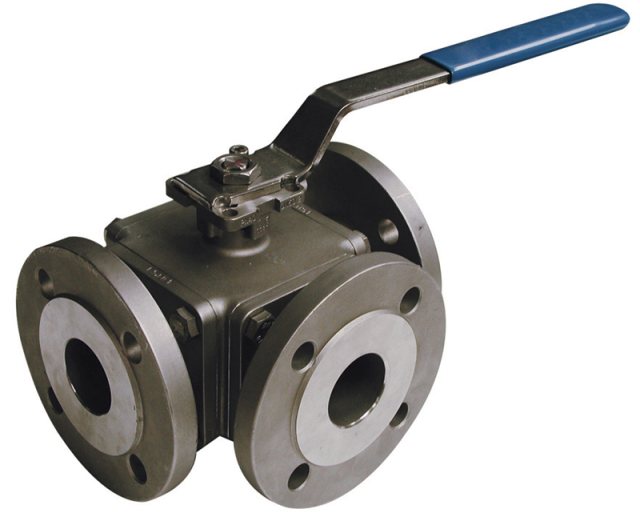

Therefore, flanged ball valves are installed only on pipelines. Thanks to their simple and efficient design, these cranes are easy to use and durable.
Coupling
Coupling ball valves are threaded at the edges, which provides this device with a reliable fixation. Such a faucet is able to pass liquid through itself and regulate its flow. Thus, coupling valves are optimally suited for installation on a radiator.
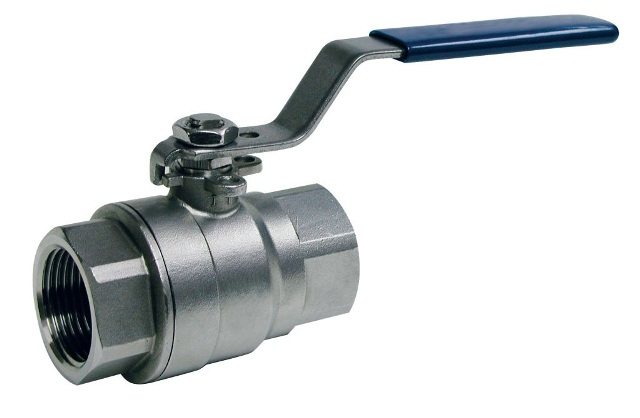

When purchasing this device, you should carefully read its technical characteristics. Typically, this information is contained in the manufacturer's documentation.
Material and type of connection
Shut-off valves can be made of various materials. The bodies of modern valves can be made of steel, bronze or brass, there are also polymer valves. In a classical heating system, pipes and batteries are made of metal, therefore brass or bronze valves are placed in such a heating main.
Attention should also be paid to the type of pipes in the pipeline. In each case, the most suitable type of connection is determined - with union or crimp nuts, with an internal or external thread.
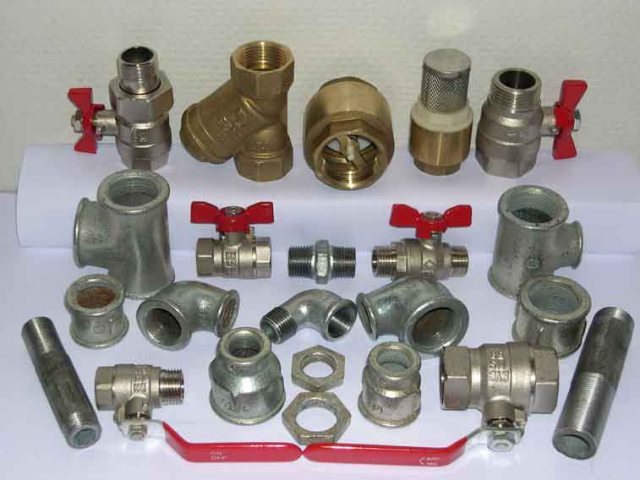

Much attention is paid to the tightness of the shut-off of the coolant flow in the system.For this, special gaskets are installed, and the metal balls in the tap are ground, achieving absolute smoothness. The smoother the surface of the ball, the tighter it will stick to the inner surface, the less chance of leakage.
Characteristic qualities of elements
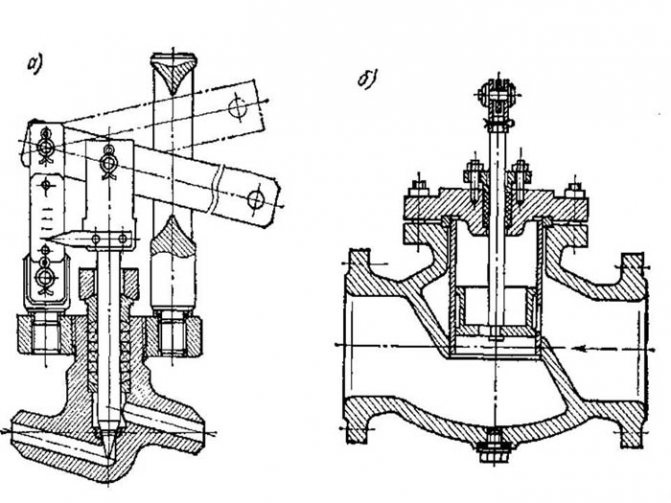

Valves with single-seated valves: a with a rod plunger, lever-type with weld-on connections for water, b with a piston plunger, lever-type flanged for steam.
If we compare the adjusting parts with other types of products, then the following significant points can be noted:
- high degree of adherence of the regulating element;
- the design does not cause difficulties in the implementation of maintenance;
- the dimensions of the regulating element are quite compact;
- there is a convenient indicator of the "open" position.
That's not all. The regulating element differs from other types in the profile of the valve and seat.
The valves used in the control valves can be single-seated or double-seated. The valve of the single-seat category (in the form of a needle) has a variable cross-section. It is fixed on the spindle or is performed as a whole with it. The saddle is fixed by means of a thread in the valve body, its cross-section has an expanding shape.
Such a valve design does not eliminate the possibility of leaks, however, this is not required, since it does not belong to the category of shut-off valves. The shaped needle valve makes it possible to regulate the flow rate of the working medium in proportion to its movement.
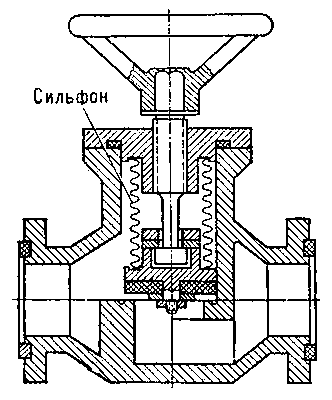

If the working medium is radioactive in nature, then it is advisable to use control valves with a bellows seal.
The double-seat design of the control valves relieves the stem from the high axial forces that occur due to the different inlet and outlet pressures. The disadvantage of the valve is considered to be an increased leakage, as a result of which it may be difficult to ensure a tight fit between the two surfaces (landing) at the same time. That is why adjustment of the medium flow rate in the presence of a small stem lift is unsatisfactory.
If the working medium is radioactive in nature, then it is advisable to use control valves with a bellows seal.
As for needle valves, they are also widely used in various fields. However, the design of the needle parts is universal, since the functions performed are characteristic of both the locking elements and the adjusting ones. The most common area of using this type of product is considered to be the regulation of small gas flows, as well as their throttling. Even with intense pressure drops across the throttle mechanism, such valves perform their functions properly.
Installation of valves
Shut-off valves are installed in the following units of the heating system:
- at the entrance of the heating main into the building;
- on all risers of the heating system;
- at the place where the pipe leaves the elevator unit;
- at the top points of the heating circuit.
Adjusting the heating system using additional fittings will help to quickly and effectively establish its stable operation, perform a thermoregulatory function - turn off the heat supply in an emergency or dismantle a section for repair or replacement. Thus, the use of shut-off valves significantly increases the safety of the entire heating system and facilitates its repair and regular maintenance.
How to install a tap on a battery
In order to be able to shut off the water in the system, one ball valve should be installed on the supply and return. If the installation of other thermostatic equipment is not provided, it makes sense to connect the valves directly to the radiator inlet.


First, a valve is screwed onto the pipe, after that a squeegee is mounted in the radiator, after which the valve is brought to the radiator and the system is fastened with a union nut.
Advantages and disadvantages
Isolation valves with a needle stem have the following advantages:
- resistance to pressure and temperature changes;
- simplicity of design;
- smooth flow control;
- high level of tightness;
- exclusion of water hammer;
- pumping of various media, including viscous;
- flow passage in only one direction, due to which the installation of a check valve is not required;
- wide range of working pressures.
Main disadvantages:
- high hydraulic resistance of the flow passing through the valve;
- long length compared to other types of cranes;
- the inability to work at high pressures with viscous media;
- the need for cleaning when pumping liquids containing small particles or dirt;
- the complexity of the repair, complete replacement of the valve.
Mayevsky crane
The Mayevsky crane is a mechanical air vent designed to release air in the heating system. Usually placed at the top of the radiator, in any free space. The faucet is a small threaded washer with a needle valve inside.
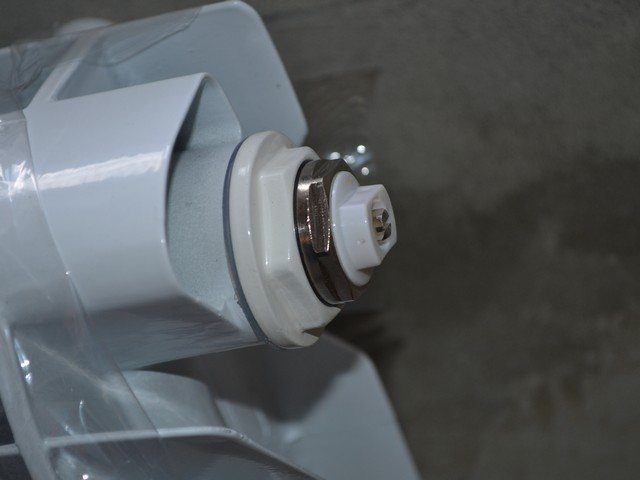

The Mayevsky crane is installed at the opposite end from the water inlet into the radiator. By slightly opening the needle valve, air can be easily removed from the radiator. This mechanism is simply turned counterclockwise several times until the air hiss appears. As soon as the sound stops, the needle valve is turned in the opposite direction and tightly closed.
The air outlet is located either in the valve body or in its plastic gasket. If the water in the system is clogged, and the pipes are covered with rust from the inside, the hole can become clogged, and the needle mechanism is disabled. Therefore, the air hole must be cleaned regularly with a commercially available sewing needle.
Heating control valves
However, in addition to the above types of shut-off valves, valves are installed to regulate the heating. A needle closure structure or with an adjusting plate is used as the main mechanism for shutting off the water. Depending on the functions they perform, they are divided into two types:
- Automatic adjustment of the volume of water - most often the design of a needle valve for heating is used for this;
- Mixing of 2 streams (with hot and cold water) to create the desired temperature regime. In autonomous heating, such valves are mounted on the water underfloor heating manifold.
What is the difference between a control valve on a heating radiator and a conventional shut-off valve? There is an element in its design that ensures automatic operation.
Thermostat
About 30 years ago, modern devices appeared to control the temperature of water in the system, which were called "thermostat". Outwardly, this thermostatic device looks like a valve, which was modified and a display with temperature indicators was installed on it.
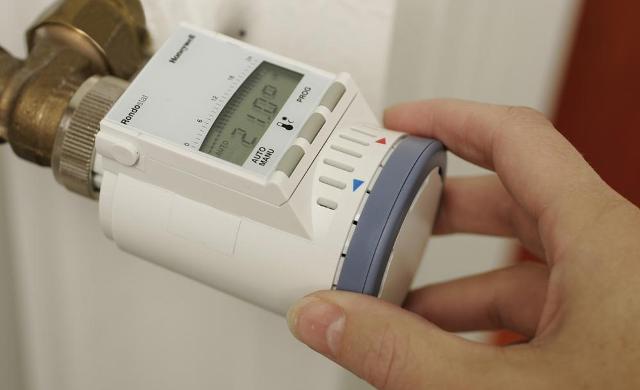

The thermostat must be installed between the battery and the supply. The appliance should be placed horizontally to limit the influence of extraneous heat sources. The design of the thermostatic device allows mixing hot water from the supply with chilled water in the return. In this way, the optimum temperature is reached and heating resources are saved.

